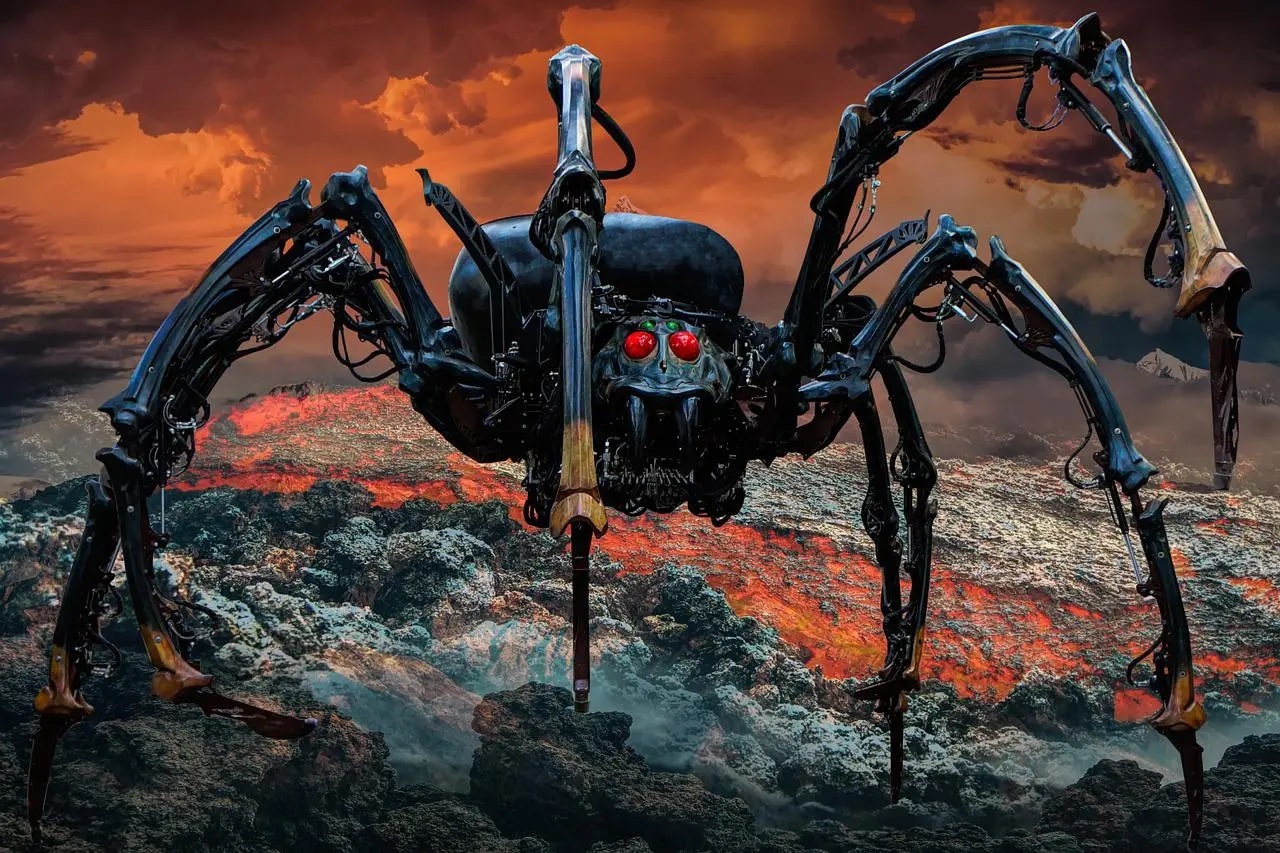Necrobotics is an emerging field that repurposes dead organisms, such as spiders, as robotic components, creating what are known as necrobots.
Imagine a world where robots aren’t just manufactured from cold, synthetic materials, but are instead crafted from the remnants of nature’s creations.
By leveraging the hydraulic nature of spiders, researchers at the Preston Innovation Lab at Rice University have developed pneumatically actuated grippers from spider corpses.
Necrobotics, at its core, is the convergence of robotics with deceased organisms, breathing new life into the realm of automation. It’s not as creepy as it sounds.
This innovative approach draws inspiration from the natural world’s efficiency and adaptability, harnessing the potential of biotic materials in robotic design.
Necrorobotics technology began to emerge in the early 21st century when novel applications in diverse fields were explored thanks to advancements in robotics and artificial intelligence.
With the increasing interest in human enhancement and the goal of extending human capabilities beyond biological bounds, the field of necrobotics gained impetus.
Exploring research and applications
IMAGINE an army of insects capable of extraordinary feats at our command! Well, that’s the plan anyway. Researchers are currently experimenting with spiders. By injecting pressurised air into the corpses of spiders, they have succeeded in activating their limbs, transforming them into functional grippers capable of lifting objects many times their weight. But the applications don’t stop there. Necrobotic technology extends its reach to the skies with the development of insect drones. By repurposing dead insects like flies or bees and outfitting them with microelectronic devices, these drones offer a novel approach to surveillance, reconnaissance, and exploration. Picture tiny drones navigating complex environments with great agility, thanks to their biological origins. These will no doubt expand to bigger animals once the technology catches up.
Some types of necrobots that are currently being researched
- Necrobotic grippers: These gadgets can lift heavier objects by using mechanical grippers made of dead spiders. To create them, a needle is inserted into the body of the spider, and air pressure is then used to expand and contract the legs. Necrobotic grippers are a viable substitute for intricate and expensive small mechanical grippers.
- Necrobotic sensors: These gadgets detect chemical or environmental stimuli by using dead insects as biosensors. They are made by affixing electrodes to the antennae or other sensory organs of the insect and monitoring the electrical impulses that the neural system of the insect produces. They can be used in place of artificial or modified biosensors.
- Necrobotic actuators: These gadgets produce movement or force by using inactive muscles. They are created by stimulating the muscles with electricity.
Implications for the future
The implications of necrobotics stretch far beyond the confines of research labs. One of its most significant contributions lies in sustainability and environmental stewardship. By utilising biodegradable materials derived from nature, necrobotics presents a viable solution to mitigate the environmental impact of conventional robotics. Imagine a world where electronic waste becomes a relic of the past, replaced by robots that directly integrate into the natural lifecycle. Furthermore, necrobotics holds promise for revolutionising various industries, from healthcare to disaster relief. In the medical field, biohybrid robots incorporating biological tissues could offer unprecedented realism in surgical training, paving the way for safer and more effective procedures. Meanwhile, in disaster zones, necrobotic drones equipped with sensory capabilities can navigate hazardous environments, providing support in search and rescue missions. The possibilities of this field are limitless! Ethical concerns As with all new technology, necrobotics must be carefully examined with an ethical lens. The methods used to obtain dead organisms for necrobotics, such as euthanasia or freezing, will no doubt raise concerns about animal welfare and humane treatment. One common method involves euthanising animals through exposure to freezing temperatures. While this method may have been chosen for its effectiveness in preserving the integrity of the organism’s body for robotic use, it delves into the realms of cruelty and inhumane treatment of animals. There is a need for clear guidelines and regulations to govern the various aspects of this emerging field. From the sourcing of animals to how the necrobots will be used, it is essential to ensure the proper regulations are in place. These robots easily have the potential to be weaponized and used as weapons of war. Without robust regulatory frameworks, there is a risk of ethical lapses and potential harm to stakeholders.
Necrobotics in Fiji
For nations like Fiji, where environmental conservation and resilience against natural disasters are paramount, necrobotics could offer a transformative lifeline in the face of adversity. Imagine biodegradable drones swiftly aiding in disaster response, easily navigating through rugged terrain to deliver essential supplies or assess damage in hard-toreach areas, especially after a cyclone or flooding. Picture biohybrid robots equipped with sensors and AI algorithms that can monitor crop health, soil moisture levels, and pest infestations with unprecedented accuracy on our farms. By providing real-time data and targeted interventions, farmers can optimise irrigation, fertiliser usage, and pest control measures, thereby increasing crop yields while minimising resource wastage. However, the realisation of these possibilities depends on the affordability and accessibility of this cutting-edge technology once it transitions into commercial viability, and on the willingness of investors to uptake necrobotics. As the world embarks on this journey into the realm of necrobotics, one thing remains clear: Fiji must seize opportunities that come with tech to improve our country and the lives of our citizens. By fostering a culture of innovation and investment in tech, Fiji can strengthen its competitiveness and resilience in the face of global challenges, ensuring longterm economic prosperity. Until next week, take care and stay safe!
• ARNOLD CHANEL is an investor and business executive with years of tech expertise. He can be contacted on ceo@vanguardtech. pro. The views expressed in this article are his and not of this newspaper.



